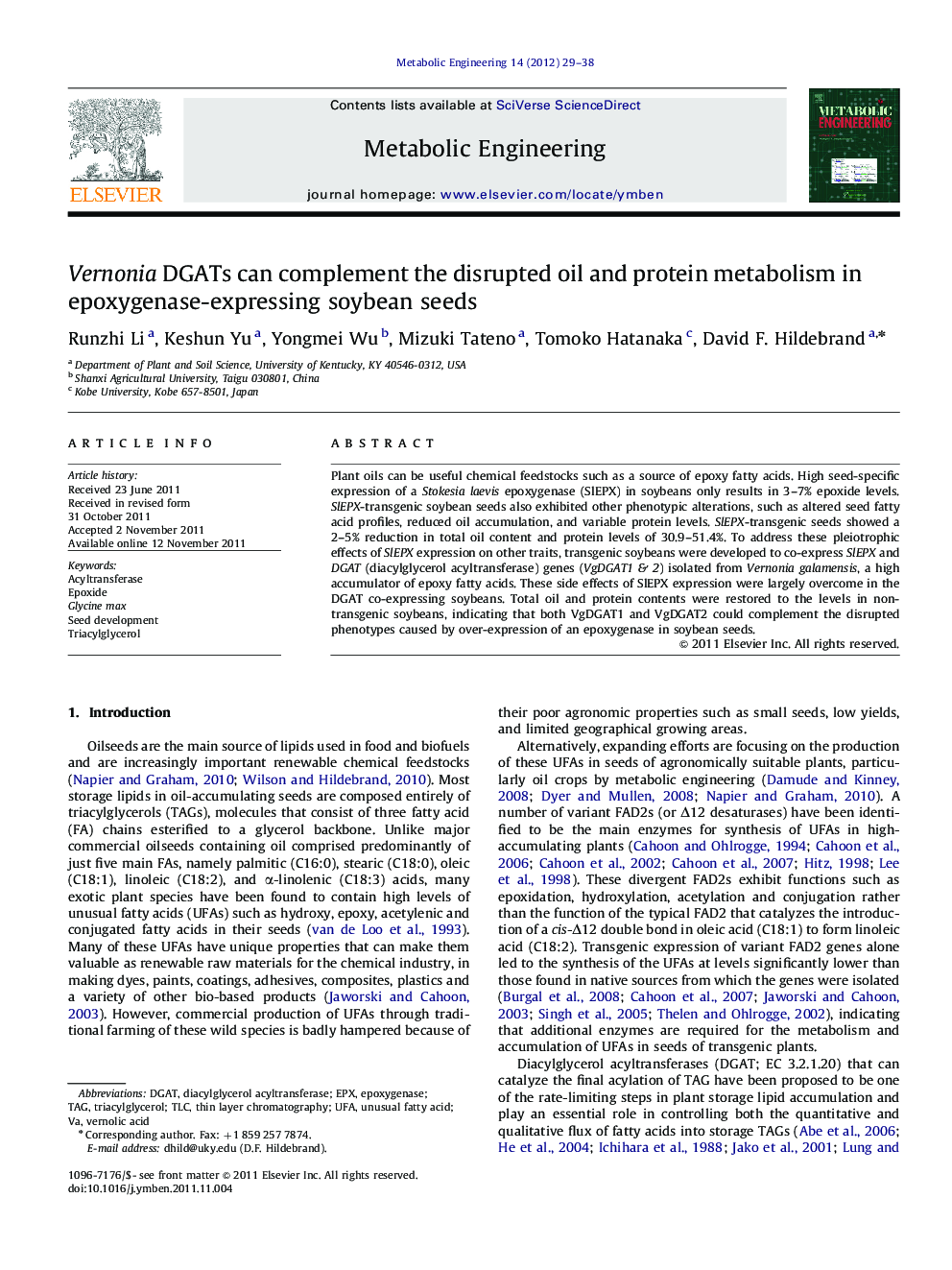| Article ID | Journal | Published Year | Pages | File Type |
|---|---|---|---|---|
| 31626 | Metabolic Engineering | 2012 | 10 Pages |
Plant oils can be useful chemical feedstocks such as a source of epoxy fatty acids. High seed-specific expression of a Stokesia laevis epoxygenase (SlEPX) in soybeans only results in 3–7% epoxide levels. SlEPX-transgenic soybean seeds also exhibited other phenotypic alterations, such as altered seed fatty acid profiles, reduced oil accumulation, and variable protein levels. SlEPX-transgenic seeds showed a 2–5% reduction in total oil content and protein levels of 30.9–51.4%. To address these pleiotrophic effects of SlEPX expression on other traits, transgenic soybeans were developed to co-express SlEPX and DGAT (diacylglycerol acyltransferase) genes (VgDGAT1 & 2) isolated from Vernonia galamensis, a high accumulator of epoxy fatty acids. These side effects of SlEPX expression were largely overcome in the DGAT co-expressing soybeans. Total oil and protein contents were restored to the levels in non-transgenic soybeans, indicating that both VgDGAT1 and VgDGAT2 could complement the disrupted phenotypes caused by over-expression of an epoxygenase in soybean seeds.
► Expression of a Stokesia laevis epoxygenase (SlEPX) in soybeans achieves 3–7% epoxide levels. ► SlEPX-transgenic seeds showed a 2–5% reduction in oil and protein levels of 30.9–51.4%. ► These side effects were overcome with Vernonia galamensis DGAT1 and 2 coexpression. ► DGAT1 and 2 restored oil and protein contents to normal levels. ► DGAT1 and 2, especially 2 greatly increase epoxide accumulation in the oil.
